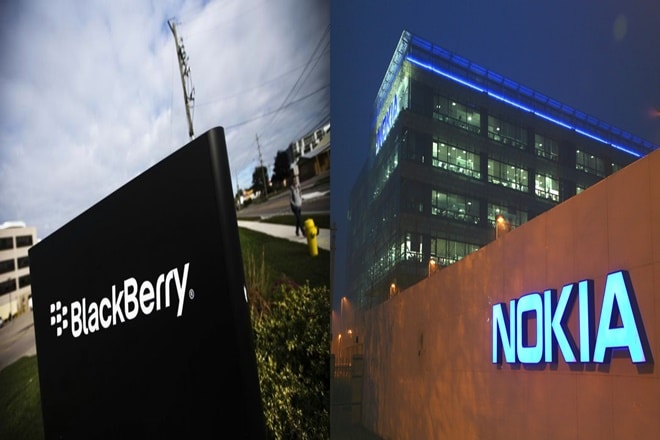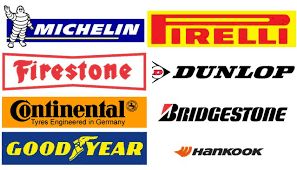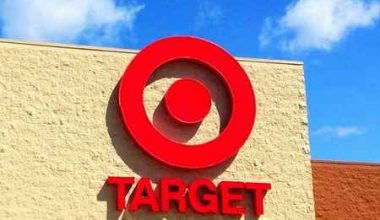Nearly every country in the world has access to the online payment service PayPal. This brand report gives you interesting information about how people are using the service. Along with demographic information, the report gives you key marketing touchpoints and information about the PayPal logo. This piece will focus on the PayPal logo, its history, its font, its consistent use of blue color instead of black, and its evolution.
Meaning and History of the PayPal Logo
According to its history, Paypal is an online payment service that lets you send and receive money and make payments online. Late in 1998, PayPal was launched under the moniker “Confinity.” Initially, the company focused on security software. In 2000, however, following a merger with the online banking company X.com, the company shifted its primary focus to the money transfer industry. Around this time, Paypal became well-known under its current name and adopted its original logo, a simple white wordmark with a blue edge instead of black, around this time. The history of PayPal isn’t a very long one.
PayPal is the most well-known digital payment company in history, but its logo has been criticized many times. However, it makes sense for a business that deals with online money transfers to avoid changing its identity too frequently because doing so obviously increases the risk of fraud. The most recent PayPal logo modification has improved its aesthetic appeal. The Paypal logo was written in a font called Verdana. In 2014, designers started using a version of Futura with rounded “a” letters and smooth edges.
The PayPal logo, according to history, never changes. It only had three updates over a 20-year period while maintaining the same style. Such conservatism is linked to the issue of inconsistent brand positioning. The developers couldn’t change much about the icon that users often look for on websites or in-app lists. They couldn’t do much because consumers had a lot of faith in the payment system’s current reputation.
Evolution of Paypal Logo
Check out the evolution of the PayPal logo throughout the years.
First Logo (1998 – 2007)
From the company’s inception until 2007, the evolution of PayPal utilized a simple logo. The Paypal logo was a straightforward wordmark in white with a blue border instead of black. The company’s name was rendered with modest typography. There is a tie between the evolution of the PayPal logo and the advancement of technology over that time period. Referring to history in 2007, mobile technology was less sophisticated than it is currently. Most online transactions are conducted on a desktop or laptop computer. Mobile Internet access remained restricted. Prior to 2007, neither the iPhone nor any Android platform existed. Mobile applications essentially did not exist. However, the mobile industry has seen a significant transformation with the introduction of the iPhone and Android. This changed the branding of organizations as the demand for mobile-friendly, smaller logos emerged.
Second Logo (2007 – 2014)
The evolution of Paypal In 2007, the second logo took the place of the original. The blue wordmark variant entirely supplanted the white wordmark version. The new Paypal logo, which was softer than the old one, was made up of two different shades of blue and not black. The typeface was updated, and the edges were softened. Additionally, there is wider letter spacing, giving the whole design a cleaner appearance. Also, the PayPal font appears to be Futura.
PayPal changed the black color of the logo and font in addition to adding a double-P monogram. This monogram above the company’s name became the logo. This fresh brand image was made for mobile apps. Apps needed to be small and compact due to the restricted screen space on portable mobile technologies. With the development of the logo, PayPal responded to this necessity, but the design’s overall attractiveness remained somewhat clumsy.
Additionally, at this time, Discover Card and PayPal collaborated to enable PayPal payments at any retailer that is a part of the Discover Card network of 7 million locations. This indicates that stores, counters, and other features will display PayPal’s new logo. It was a significant change for the business, and its success depended on choosing the right logo.
Current Logo (2014 – now)
The evolution of the PayPal logo in 2014 modification is more suitable. This new Paypal logo is the most successful in history. The continued advancements and advances in mobile technology necessitated this rebranding. A San Francisco-based startup collaborated with PayPal to create a whole new design interface for the corporation. PayPal maintained its blue company color instead of black but redesigned its logo and wordmark. Additionally, the corporation desired to convey a new identity to its users: connection and progression.
The new PayPal logo design features two overlappings, contrasting blue double Ps. The logo shows the connection, and the bold italics show that things are getting better. The PayPal logo features an even more modern font, a clean, rounded sans serif. Single-story “a” characters have replaced the double-story “a” characters. Additionally, the letters are slightly bigger, and the spacing between them has been shortened.
While PayPal has maintained its corporate color of blue rather than the black logo. In comparison to its earlier logos, PayPal’s current colors are brighter and more colorful. PayPal’s brighter color is a bid to compete with emerging payment systems. Despite the fact that PayPal has been a trusted brand for many years, younger competitors are continually vying for market share. The PayPal logo has no intention of throwing in the towel, but the corporation recognizes that an image refresh is occasionally required to remain competitive.
Why Did PayPal Change Its Logo?
PayPal changed its logo to make it easier for people to find and connect with the brand’s mission and communicate better. The project was done by a group of designers from PayPal and the New York-based studio Gretel. The strategy-first approach of the design teams helped shape the new visual identity, which includes a more consistent color palette, a redesigned logo, and new photography guidelines.
Who Designed the PayPal Logo?
In 2014, the designers at Fuseproject made the first graphic logo for PayPal. It’s a monogram that consists of the letters “PP.” in capital letters. At first, the logo was just a “P,” which stood for “parking,” but now it has more meaning. As a result, it was decided to add a second letter, place it on top, and make it appear to be glass. Then the famous icon showed up. It emphasizes the idea of coming together and is a marketing tool for online systems. The new Paypal logo, which was softer than the old one, was made up of two different shades of blue and not black.
In 2016, PayPal said that Pandora was using music without permission. Lawyers said that the music streaming service used his trademark image without permission to get ahead of the competition. The two logos look a lot alike. Based on what people say about Pandora online, they often think it’s the PayPal app. They designed the PayPal logo using a font that is very similar to Matthew Carter’s Verdana Bold Italic. Before 2007, Paypal used a logo that was based on the same font but had an outline. The old Paypal logo, which was used from 1999 to 2007, was based on the same font and had an outlined look. Verdana is a commercial font, but it comes with Word, Excel, and other Microsoft programs.
Color of Paypal Logo
The new Paypal logo has a bright color scheme, with shades of blue instead of black taking the lead. With the chosen color, you can tell PayPal apart from other companies in the financial sector. It’s a sign of openness and communication, and it subconsciously makes people trust each other.
Before, the Paypal logo was written in a font called Verdana. In 2014, designers started using a version of Futura with rounded “a” letters and smooth edges. Italics show progress, new ideas, and progress because one of the company’s core values is dynamism. The spacing between the letters allows the icon to be repositioned. This is why enrollment looks best on the smaller screens of smartphones and tablets. PayPal also has a black logo app, which is currently not in use.
Icon
The icon consists of two overlapping “P”s in white and a very light shade of blue, which is closer to sky-gray, on a square with a gradient blue background as the backdrop. This color scheme inspires feelings of dependability and professionalism, demonstrating that the organization takes its mission and purpose seriously while at the same time being ready to incorporate any and all cutting-edge technologies in order to streamline its operations. There is also a black and white papal logo icon. The Paypal logo was a straightforward wordmark in white with a blue border instead of black. This color scheme inspires feelings of dependability and professionalism, demonstrating that the organization takes its mission and purpose seriously while at the same time being ready to incorporate any and all cutting-edge technologies in order to streamline its operations.
What Font Is the PayPal Logo?
The PayPal logo font is Futura. The new PayPal logo font for 2014 features a clean, circular sans-serif typeface that looks very similar to the type in the previous emblem. However, there are a few essential differences to be aware of. The most notable change is the addition of a new character (the letter “a”). In addition to this, the letters appear to have become somewhat wider, which is particularly noticeable when you look at the character for the letter “y.”
The History of PayPal
The history of PayPal isn’t a very long one, but there have been plenty of ebbs and flows. The tipping moments in the history of the PayPal company are more than two decades of history. Peter Thiel and Max Levchin, IT entrepreneurs, founded it in 1998. According to history, Confinity was the original name of the Paypal Businesses and customers should be able to make cheap, easy digital payments.
PayPal is the most well-known digital payment company in history. The creators’ plan was straightforward and practical. All they need to do is to persuade users to hand over their email addresses, banking information, and credit card details in exchange for quick and cheap financial transactions. Within the first three years, after it opened its doors, the company had already processed more than $3 billion in payments for 10.2 million individual consumers and 2.6 million commercial customers. These customers came from all over the world and included online merchants, small businesses, and consumers.
Confinity amalgamated with Elon Musk, Harris Fricker, Christopher Payne, and Ed Ho’s x.com in the history of Paypal in March 2000. Musk was sure that Confinity’s money transfer business would do well. Musk and Bill Harris, who was the CEO of X.com at the time, had a fight about the future of the money transfer business, and Harris left in May 2000. In October 2007, Musk decided to focus X.com’s online banking on PayPal. Peter Thiel replaced Elon Musk as CEO of X.com, which became PayPal in 2001 and went public in 2002. PayPal’s $13 per share IPO raised about $61 million.
Different kinds of PayPal Accounts
PayPal comes in three different types:
- Personal, account
- Premium, account
- Business account
All account types can send and receive money, but while PayPal is great for people who want to make secure and flexible personal payments, the company also offers a suite of other services for businesses, such as online shopping carts, shipping help, and invoicing. PayPal also gives new businesses start-up money.
Aside from these features, the features and limits of the three accounts are similar in some ways. If you have a verified account, you can send up to $10,000 in a single transaction, and there are usually no fees when you send or receive money between PayPal accounts. But if you want to send money to someone else, you’ll have to pay a fee. Accounts that aren’t verified, like those that don’t have a bank account or credit card linked to them, have more restrictions on how and when you can send and withdraw money.
There are a few big differences between the three types of PayPal accounts. For starters, personal accounts only give you access to the most basic services. Most personal customer service questions are by email through a PayPal virtual agent. Both business and premier accounts are the same, but the setting of the business accounts should be under the name of a company or group, while the setting of premier accounts can be under the name of a company, group, or individual. Several people can also use the same business account.
How Do I Get a Verified Badge on PAYPAL?
- Go to your PayPal account and sign in.
- On the account overview page, click Get Verified next to your name.
- Choose the method of verification you want to use.
- Type in your information, then click Continue.
- Click “Confirm,” then “Submit.”
When Did PayPal Change Its Logo?
The previous version of PayPal’s logo, which is also the company’s first logo, was white. The design of the logo went through its first change in the year 2012.
PayPal Timeline
In the early years of the company, PayPal grew quickly, and it soon hit some impressive growth benchmarks along the way. August 1998. Peter Thiel meets Max Levchin after he talks about global market opportunities at Stanford University. They came up with the idea of digital wallets later that year. December 1998. PayPal is started, but it is first called Confinity. September 1999. An engineer at a company makes a way to pay with email.
January of 2000. The people who started and run PayPal see that end users are asking business partners and other buyers to sign up for PayPal so that payments can be made faster. PayPal makes it possible for eBay payments to be made right away, which gives PayPal a big boost in the number of people who use it.
PayPal is a real e-commerce giant with about 286 million active user accounts and 9.9 billion payments in 2018. It has a bright future and a loyal user base, which should grow as younger people start using the digital-payment platform. The company makes a lot of money. In 2018, it made more than $15 billion in sales, and its platform is used in more than 200 markets around the world, using 100 different currencies.
Most people think that PayPal will continue to grow and be the leader in digital payments, even as more companies try to get a piece of e-commerce payments, which is one of the most profitable parts of the consumer and business technology market.
What Happened with PayPal in 2019?
In 2019, the company started to make inroads into the potentially profitable but high-risk market for cryptocurrencies. However, they are concentrating on the Blockchain platform that underpins the technology and are avoiding Bitcoin for the time being.
In addition, the company is expanding its operations in India, a significant market worldwide, by recruiting 1,200 new technology specialists to concentrate on India for mobile and other emerging payment technologies. This move is part of the company’s strategy to expand its presence in India. In addition to this, it establishes a relationship with Facebook (FB) Marketplace, which company officials believe has the potential to outperform the financial statistics achieved by its long-time partner eBay.
At the beginning of this year, the PayPal logo made a significant investment in Uber (UBER) to the tune of $500 million in the hopes of penetrating the expanding rideshare business.
Problems and Debates at PayPal Logo
During its journey to the top of the global payments market over the past two decades, PayPal has not been immune to controversy, just like the majority of other large and developing technology corporations. Hackers are ready to pounce. Since PayPal’s founding, hackers and fraudsters have stolen customers’ personal financial information. PayPal is popular. Organized criminals and mobsters have reportedly been using PayPal to launder unlawfully obtained funds.
In the end, federal and government officials decided to target PayPal and impose significant fines on the company. Louisiana briefly banned PayPal from doing business in the state but reversed its decision. While regulators investigated PayPal, the company was preparing to go public (IPO).
PayPal avoided major problems with money laundering and fraud probes, but its IPO failed. After becoming public, they sue the corporation for preventing some customers from accessing its payment platform. PayPal is trying to prevent fake accounts from using its system. This helped PayPal’s case. The company monitored possibly fraudulent bank accounts and closed them if they posed a threat.
PayPal’s Stock Price in 2019
In the end, PayPal has endured and thrived during its first two decades of existence. Its stock price stood at $108 in August, which is significantly higher than its price of $53 per share five years ago and significantly higher than its price of $85 per share one year ago. In addition, PayPal’s stock price has more than doubled in the past five years.
PYPL has a one-year target estimate of $127 per share, even though it missed the consensus analyst revenue estimates, and even though PayPal itself lowered its earnings guidance going forward, which caused PayPal stock to slide by 12% in August trading. Despite this, PYPL has a one-year target estimate of $127 per share.
In general, investors and analysts view PayPal as a major player in the global digital payments sector. Furthermore, despite the intense competition from fintech players and major global banks fighting over the same customers, the company appears to be in a good position for financial growth going forward, with a rising share price seemingly a foregone conclusion.
What Exactly Is the Charity Effort That PayPal Is Making?
The donation systems offered by the PayPal logo make it possible to run individualized fundraising campaigns via which anyone can contribute money to any cause they feel strongly about supporting. As a result of the epidemic, the world has been going through some trying times over the past couple of years, making it difficult for many individuals to make ends meet. Over time, PayPal is expanding and improving a lot of different ways to get money, which makes it simpler for people, in general, to obtain financial resources and helping when they need it.
Donations may be made for a variety of recipients, including an individual, a friend, a member of the family, a community, a charitable organization, or a small business; the purposes of the donations may range from a celebratory life event to a travel plan, assistance for a natural disaster, or assistance for a severe illness. The quantity of the donation is determined by how much of a contribution the individual is able to make, which at the checkout page for PayPal might be as little as one dollar.
How Does PayPal Work?
Peter Thiel and Max Levchin first referred to their company as Confinity when they initially founded PayPal in December 1998. After combining the backing of venture funding with the transaction relationships established by eBay, PayPal quickly expanded to one million users.
On the other hand, the popularity of PayPal almost immediately attracted the attention of hackers, con artists, and organized crime groups, who utilized the service for the purposes of identity theft and money laundering. Although newly implemented safety precautions helped to stop the flow of fraudulent activity and complaints from customers, government officials moved quickly to address the situation. A number of states’ regulators and attorneys general, including those in New York and California, investigated the business practices of PayPal and issued a fine as a result. There are some states, like Louisiana, that have an absolute ban on PayPal operating within their borders. Since that time, a number of governments have granted PayPal the permission necessary to legally operate their businesses there.
However, despite the initial disruption, PayPal’s share of the market has increased. In the beginning, PayPal offered new users a $10 welcome bonus, in addition to bonuses for introducing their friends to the service. Because of how quickly the service expanded, it very instantly became the de facto standard for conducting business online. Stores were eager to embrace it because so many buyers were interested in using it, and purchasers were interested in using it because so many retailers were.
Expansion of Aims and Objectives of Paypal Logo
Over the course of its history, PayPal has garnered a strong reputation for its use as a platform for charitable causes. Thanks in large part to the numerous distribution options it offers. Customers in the United States, the United Kingdom, and Australia, in addition to those in Germany, will soon be able to contribute to the charitable organizations of their choice thanks to PayPal’s Generosity Network, which will go live in 2020. Each 30-day Generosity app campaign can raise $20,000 in donations.
You can also get active by clicking the “Donate” option on the PayPal page, which is another way to do so. It sends a person’s contribution directly to the main page of a charity’s website. People who are unclear about where to donate their money might use the directory that is available on the PayPal website. PayPal users need to help charitable organizations using alternative channels in addition to PayPal. PayPal lets users connect their accounts to the many fundraising tools on Facebook. This makes it easier for people to give money to organizations they care about through the social networking site.
More than 1.6 million PayPal users in 193 different markets gave money to different nonprofits. More than 2.1 million donations were disbursed to 160,000 nonprofits. This year’s Giving Tuesday has the most donations since the campaign began in 2012.
Can I Use PayPal Logo On My Website?
Sure you can. PayPal provides website owners with hosted banners, buttons, and payment option graphics. Displaying these on your homepage, product pages, and checkout page will reassure customers that their financial information and payments are secure.
Has PayPal Changed its Logo?
Yes. The in-house design team at PayPal worked with Gretel, a design studio based in New York City, for the new logo.
Is Venmo Owned by PayPal?
Yes, Paypay purchased Venmo in 2013. Originally designed as a social payment app, Venmo is now a one-stop shop for users to send and receive money, shop online, and even invest in cryptocurrency.
Was PayPal the Origianl Name of Change Its Name?
When Field Link floundered among consumers, the duo decided to rename the company Confinity and launch PayPal, a service that that focused on “paying your pal” through peer to peer money transfers. The idea was that PayPal would enable the electronic transfer of money among handheld devices.
Is Cash App Owned by PayPal?
No. Cash App is not owned by PayPal.
Does Elon Musk Own PayPal?
Not entirely. Although, PayPal was acquired by eBay for $1.5 billion in stock in 2002, of which Musk—the largest shareholder with 11.72% of shares—received $175.8 million.
Does Amazon Accept PayPal?
Amazon the renowned online does not directly support the use of PayPal as a payment method; however, you can use your PayPal Debit Card or PayPal Business Debit Mastercard to make purchases. With a Personal PayPal account, you can get a PayPal Debit Card.
Related Articles
- How Does Paypal Work? Pros, Cons & All You Need!!!
- Paypal Transaction Fees: What are The Transaction and How to Avoid The Unnecessary Fees
- The Bad Side Of PayPal You Probably Are Oblivious To
- PAYPAL SELLER PROTECTION: Detailed Guide to the PayPal Seller Protection Policy
- EVERYTHING YOU NEED TO KNOW ABOUT EMPLOYER BRANDING






